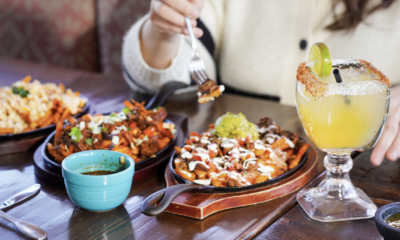family
While Americans Revel in Cinco de Mayo, Most Are Clueless About Its True Significance

Many Americans celebrate Cinco de Mayo, but few understand its true significance. Contrary to popular belief, the holiday doesn’t mark Mexican Independence, celebrated on September 16. Instead, it commemorates the Battle of Puebla, fought on May 5, 1862, between Mexican and French forces.
In the context of Mexico’s extensive history, the Battle of Puebla is often viewed as a minor event. Yet, its legacy has persisted, especially in the United States. Following independence from Spain in 1821, Mexico faced international skepticism and territorial losses to the U.S., leading to prolonged economic instability.
This period of turmoil included a civil war that culminated in 1861, bringing Benito Juárez, Mexico’s first indigenous president, to power. One of his first actions was to suspend foreign loan repayments to safeguard the struggling economy, angering Britain, Spain, and France, which led to a joint military intervention. However, both Britain and Spain quickly withdrew, leaving only French forces determined to undermine Juárez’s government.
On the day of the battle, General Ignacio Zaragoza led a determined Mexican Army, despite being outnumbered by seasoned French troops. This victory became a source of national pride, prompting Juárez to declare Cinco de Mayo a national holiday just days later.
Although the French eventually claimed victory and established a brief empire in Mexico, the Battle of Puebla sent a compelling message of resilience. The victory was particularly significant as it was led by an indigenous president, symbolizing strength against colonial powers.
Interestingly, the Battle of Puebla also had implications for the United States. During its Civil War, some believe that Mexico’s victory hindered the French from advancing northward, potentially aiding the Confederacy. This perspective suggests that the outcome could have altered the trajectory of American history.
Cinco de Mayo saw limited celebration in the U.S. for many years but regained prominence during the mid-20th century, particularly within the Chicano movement. This celebration mirrored struggles for civil rights, as Mexicans were seen as fighting against an imperial force.
In the 1980s and 1990s, Cinco de Mayo became highly commercialized, with beer companies targeting Mexican Americans to celebrate their heritage. This commodification led to the emergence of themed products like piñatas and sombreros, often straying into cultural insensitivity.
Despite the growing popularity of the holiday across various demographics, awareness of its origins remains low. A survey indicated only 10% of Americans could accurately describe what Cinco de Mayo commemorates.
For many Mexicans, particularly outside Puebla, Cinco de Mayo holds less significance compared to national observances like Independence Day and Día de los Muertos. However, reenactments of the Battle of Puebla continue in Puebla and Mexico City.
For Mexican Americans, this day provides a chance to honor their heritage. However, as commercialization continues to shape perceptions, some express mixed feelings about its celebration, while many non-Mexicans see it mainly as an occasion to enjoy margaritas.


















